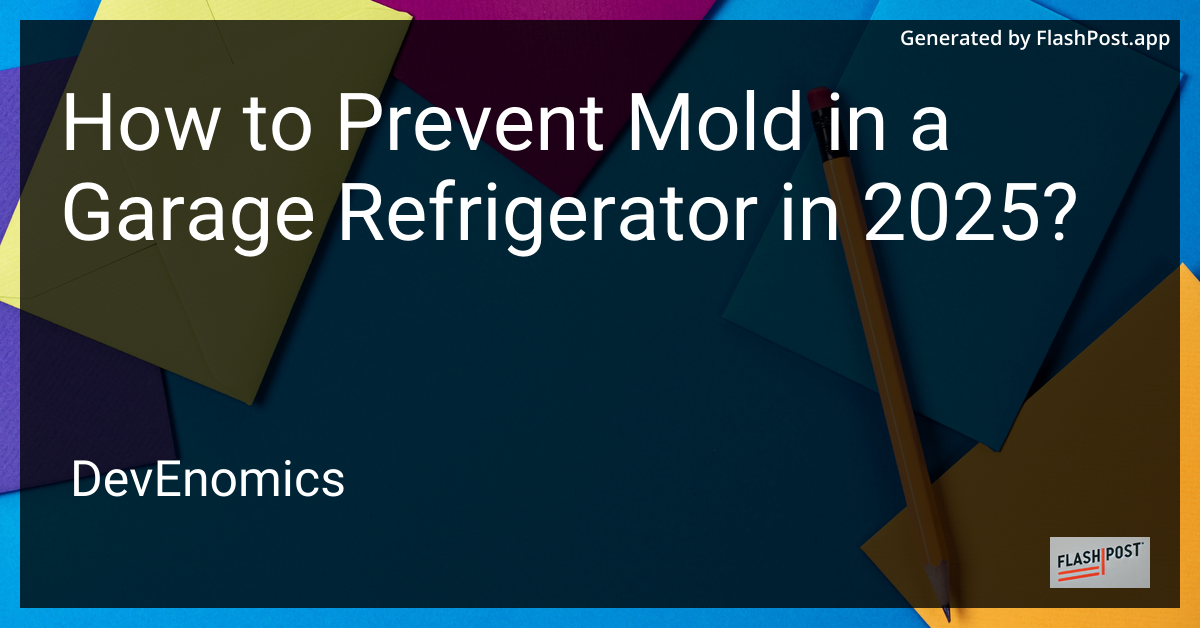

How to Prevent Mold in a Garage Refrigerator in 2025?
If you’re using a refrigerator in your garage, you likely know how convenient it can be for storing extra food and beverages. However, outdoor conditions, fluctuating temperatures, and humidity levels can create an ideal environment for mold growth inside your garage refrigerator. This comprehensive guide will provide you with expert tips on preventing mold in your garage refrigerator in 2025, ensuring your appliance remains efficient and safe.
Why Mold Grows in Garage Refrigerators
Mold thrives in environments with moisture and organic material to feed on. In the context of a garage refrigerator, mold can develop due to:
- Humidity: Garages are often less climate-controlled than indoor spaces, making them more susceptible to higher humidity levels.
- Temperature Fluctuations: Extreme changes in temperature can cause condensation inside the refrigerator, leading to mold.
- Improper Ventilation: Lack of airflow can trap moisture, creating an environment conducive to mold growth.
Key Strategies to Prevent Mold
To keep your garage refrigerator mold-free, implement the following strategies:
1. Maintain Consistent Temperature
Ensure your refrigerator maintains a solid temperature between 35°F and 38°F (1.7°C and 3.3°C). Extreme temperatures often fluctuate due to the garage’s exposure to outdoor elements. Using a dedicated refrigerator thermostat can help maintain an even temperature. For tips on keeping other refrigeration equipment clean and efficient, see wine refrigerator maintenance.
2. Ensure Proper Ventilation
Good ventilation will reduce humidity and help regulate temperatures. Make sure there is enough space between the wall and the refrigerator to facilitate airflow. Consider installing a small fan in the garage to keep the air moving, which can help minimize moisture buildup.
3. Use Dehumidifiers or Moisture Absorbers
Consider using a dehumidifier or placing moisture-absorbing pellets inside your garage and refrigerator, especially if your area experiences high humidity. These tools will drastically decrease moisture levels, reducing the chances of mold growth.
4. Regular Cleaning and Maintenance
Regularly clean the interior and exterior of your garage refrigerator. Use a bleach solution or vinegar for a thorough clean to eliminate any mold spores that may have developed. For more cleaning tips, you might want to explore how to maintain other appliances, akin to refrigerator light not working 2025.
5. Avoid Overloading the Refrigerator
Overloading your fridge can block the internal vents, leading to poor circulation and uneven cooling, creating condensation and environments where mold can thrive. Ensure there is adequate space for air circulation inside the refrigerator.
6. Good Seal and Door Checks
Ensure the door seals are tight and intact. Check for any gaps or cracks in the seals, as they can allow warm, humid air to infiltrate and condense inside. If you notice the seals are compromised, replace them promptly.
Conclusion
Preventing mold in your garage refrigerator involves maintaining proper temperatures, ensuring good air flow, and frequent cleaning. By following these strategies, you can keep your refrigerator mold-free and functioning optimally, saving you both time and money.
If you’re looking to upgrade your refrigerator, there are many options available. Have a look at the current French door refrigerator discounts for deals that might suit your needs and ensure a mold-free future for your garage refrigeration needs.
For further reading, check out the tips on wine refrigerator maintenance and troubleshooting guides such as refrigerator light not working 2025.
